History is the Maryland State House’s biggest lure for visitors. Fine art is easily overlooked when standing under the great dome of the only state house ever to have served as the US capitol.
George Washington Comes to Town
When you’re soaking in the aura of the restored Old Senate Chamber where Congress received George Washington’s resignation as commander-in-chief of the Continental Army, your mind initially is on things other than art.
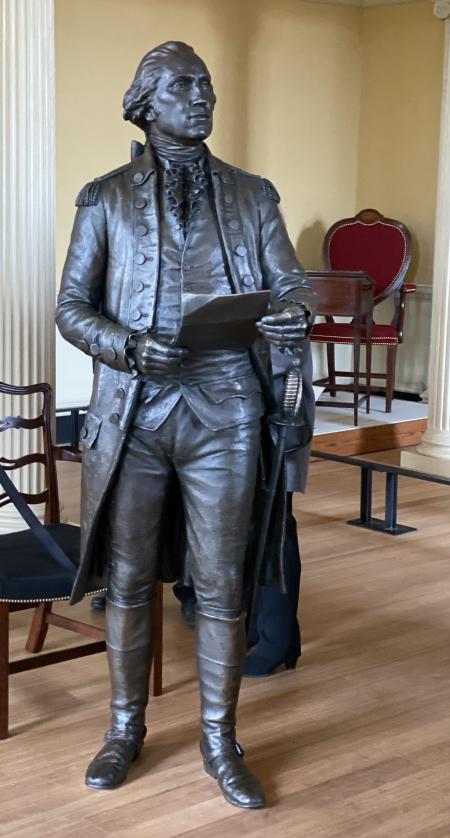
My awakening to art in the State House occurred while standing next to the life-sized statue of Washington. I was peeking over his arm imagining I was reading his speech while he was giving it when it dawned on me that the statue was beautiful. As I looked around the chamber as Washington must have done, I spotted a statue of a woman. Washington would have seen the real person, Molly Ridout, in the gallery. Both statues were made by StudioEIS, in New York City.

I also noticed the beautiful wood trim below Molly. It is a restoration based on original drawings such as this one.
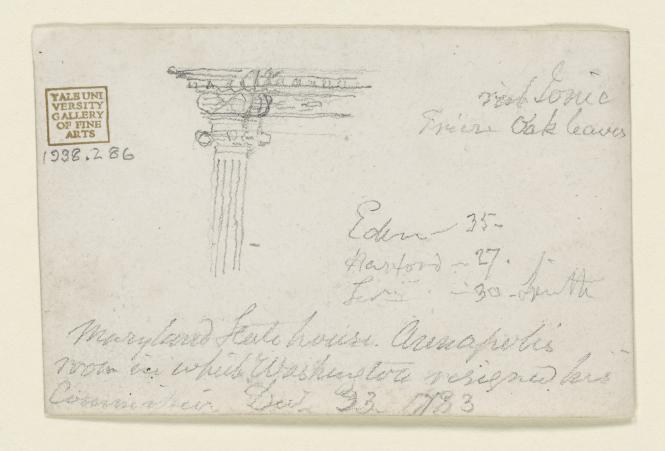
Detail of original State House interior design. Photo courtesy of Yale University
A mural in the Senate Committee Room by artist Kevin Woest (2014) depicts the resignation ceremony, including its various attendees.

Portraits and Peales
Not surprisingly, much of the art in the State House is portraiture. One of America’s most respected portrait artists, Charles Willson Peale (1741-1827), a native Marylander who lived in Annapolis for several years, painted at least 60 portraits of George Washington. A portrait of Peale by Adrian Lamb is in the Senate Committee Room.
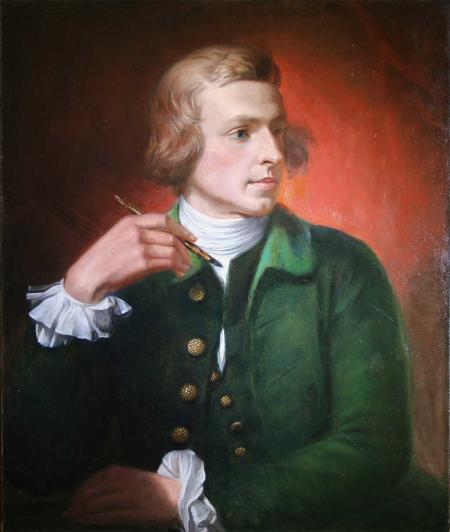
Peale painted at least six of the portraits in the State House. One of the most well-known is in the Senate Committee Room and commemorates Britain’s surrender at Yorktown.

Another highly regarded Peale painting hangs in the Old Senate Chamber. Peale donated this portrait of William Pitt to Maryland to be displayed in the State House. The painting contains symbols that represent Pitt’s dedication to the American cause.

Peale fathered a large family of Maryland artists and naturalists. A portrait of Washington by Peale’s son Rembrandt is in the Governor’s Office.
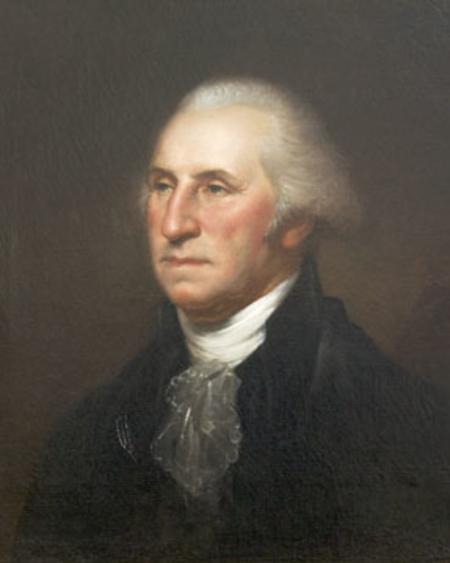
The Earliest Days of Maryland
A number of the paintings in the State House portray the colony at its earliest stages, such as the portrait of George Calvert in the Governor’s Reception Room painted by the Dutch artist Daniel Mytens the Elder in about 1630. Although Calvert, an Englishman, never came to Maryland, his petition for a grant of land north of the Potomac River led King James I to authorize the creation of the colony in 1632.
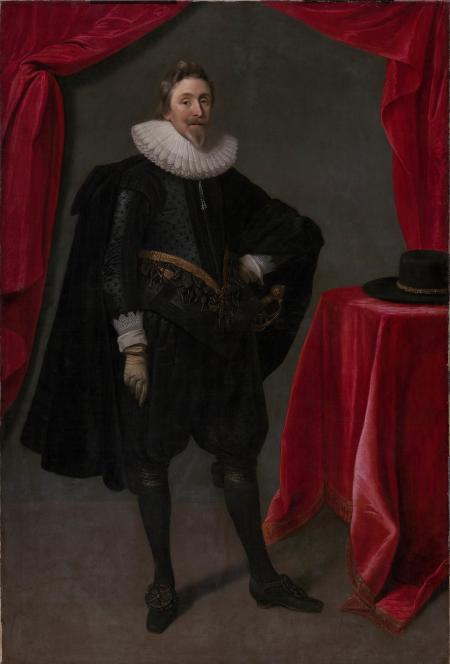 George Calvert painted by Daniel Mytens around 1630. Photo courtesy of the Enoch Pratt Free Library.
George Calvert painted by Daniel Mytens around 1630. Photo courtesy of the Enoch Pratt Free Library.
Artist Frances Blackwell Mayer (1827- 99), who was born in Baltimore and spent most of his life in Annapolis, painted two key events in the colony’s history. Both hang in the Old House of Delegates Chamber. The Planting of the Colony of Maryland commemorates the landing of the colony’s first settlers in 1634.
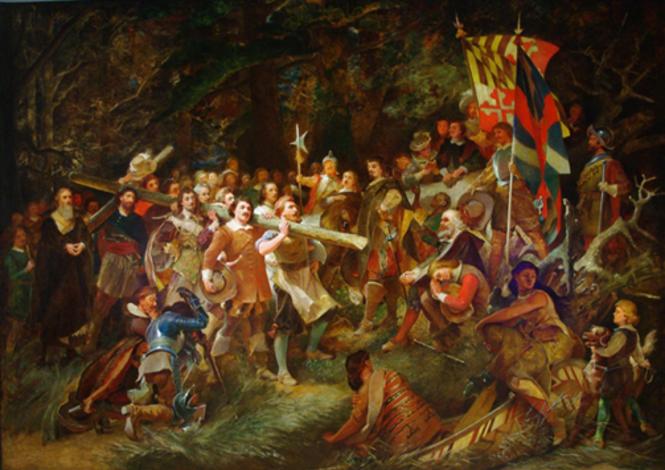
The Burning of the Peggy Stewart depicts Annapolis’s equivalent of the Boston Tea Party. When the owner used the ship to bring in British-taxed tea in 1774, a mob forced him to set fire to his own ship as punishment.

Odds and Ends of Art
The bust of Benjamin Franklin in the Archives Room was made Jean-Jacques Caffieri (1725-1792) in Paris. Franklin liked it so much that he ordered copies for friends and family.
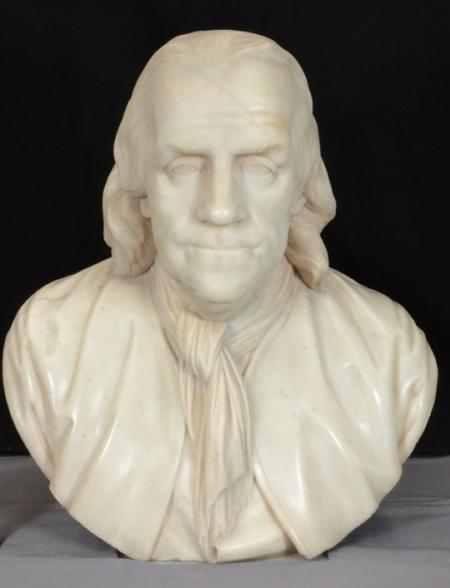
Bust of Benjamin Franklin. Photo courtesy of Maryland State Archives.
In 1796, the Maryland Senate commissioned noted Annapolis cabinetmaker John Shaw to provide furniture for the chamber, which remained in use there until around 1840.
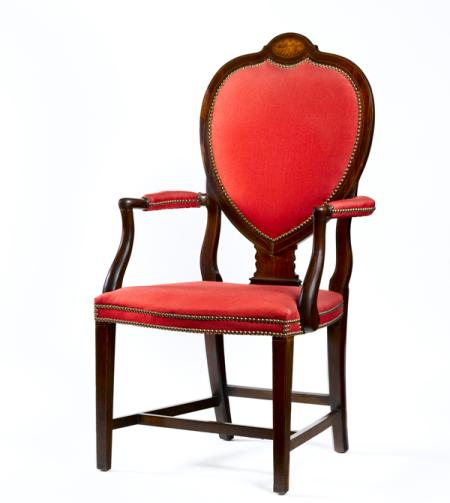
In 1906, Marylanders donated $5,000 to purchase a silver service for the new cruiser Maryland. Made by Samuel Kirk and Sons of Baltimore, the set depicts scenes from Maryland's counties and Baltimore City. Four pieces of the service are now on the submarine USS Maryland; the rest is on display in the State House Caucus Room.
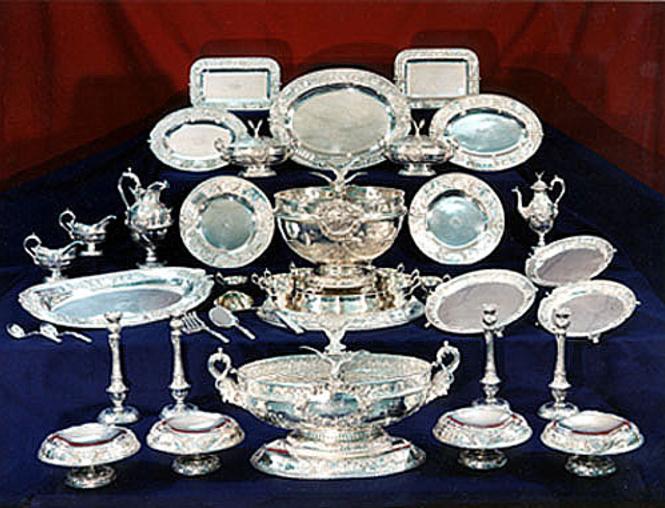
For more information on art in the State House (there’s a lot more than what is described here), the Maryland State Archives offers a comprehensive guide you can view here. If you tour the State House, you’ll see that each piece is well labeled and described.









